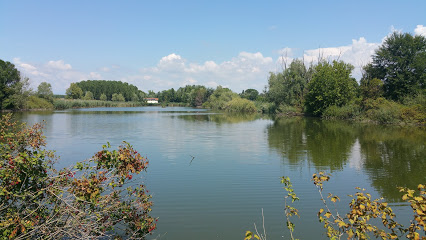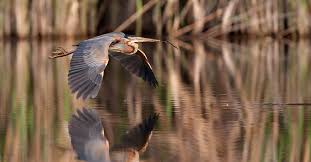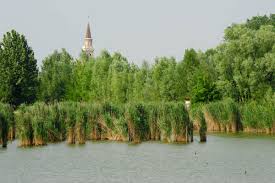Is one of the favorite destinations especially by natural photographers in the area, thanks to the existence of many species of animals and plants. It is part of the 40-hectare SIC and SPA area and is managed by Oasi WWF Cave di Noale.
The history of the oasis begins from afar, in the second period after the war, the area was heading to the mud extraction area to supply the nearby Cavasin furnace. After the abandonment of exploration practices, in the early 1970s, quarries fed by rainwater and groundwater from Rio Draganziolo were converted into ponds of variable depth from a few decimers to a few meters. This has allowed the rapid colonization of leading plant species and the subsequent swamps and swamps. Thus, wetlands of great natural value, characterized by great environmental variability, were created, which favored the colonization of the area by a large number of animal species (above all birds, fish and amphibians).
Robin
Vegetally speaking, the area is particularly interesting for the thick, soft jungle surrounding the ponds, which consists of tree species such as black, gray willow, white willow, white hawks and black hawks. The ponds feature plants such as tiva, cane swamps and iris. In particular, the formation of marsh straw has evolved dramatically and led to the presence of a broad layer of cane, one of the most distinctive elements of the oasis. In fact, the reed layer occupies a large part of the area and represents a special habitat for different species of animals, especially the birds they protect there.
Moth
The typical animal species, in relation to the life of birds, are: the kingfisher, many aqueducts (including red herons, nesting vials, winter visiting boats, etc.) Bluebirds, birds, bees, squid, etc.), woodpecker (red and green), and birds of prey (swamp swamps, Sparrow, Kestrel, Buzz). It is also interesting to note that there are many types of insects, which highlight different types of butterflies (germs, vanes, papillions, etc.) and dragonflies.
tuffetto
The Oasis enjoys free access, it is equipped with animal control enclosures and two specially designed huts to cater to natural photographers; one active throughout the year and situated in front of a shallow water pond is very popular with kingfishers and ardeids. The second is only active in the winter months when the cradle is ready for pedestrians; here there is a good chance to resume the big spotted woodpecker, the scopaiola bird, the animal, the green jump, the robin and the breast. Both cottages are oriented towards the east, so it is suggested to use them first of all in the afternoon, with the sun behind them.
Even those who prefer simple observation can feel very comfortable stopping at the edge of the ring track to listen to Nightingale, Cuckoo's or Auraol, or using a good pair of binoculars and checking the ardeids in the vicinity of their nests. In addition, the natural area is also designed for citizens who wish to use for hiking, outdoor activities and social networking.




